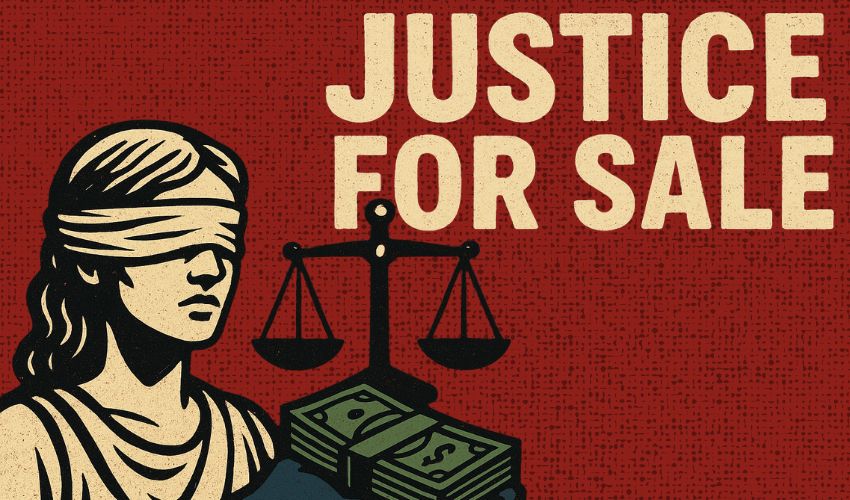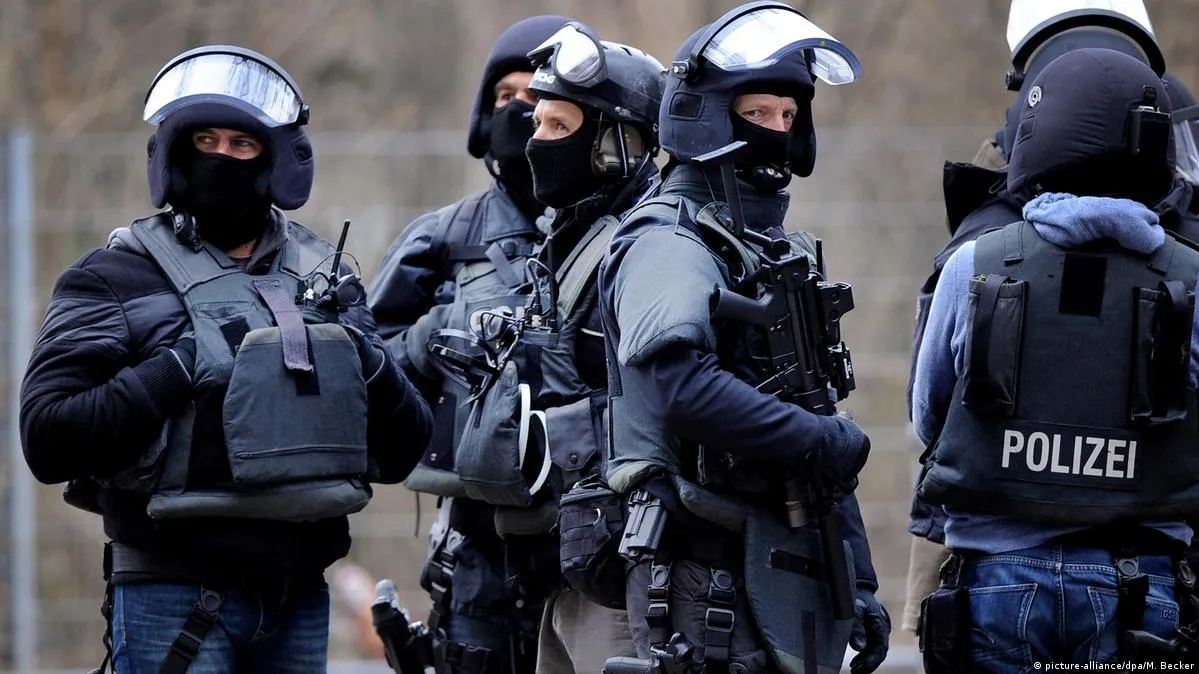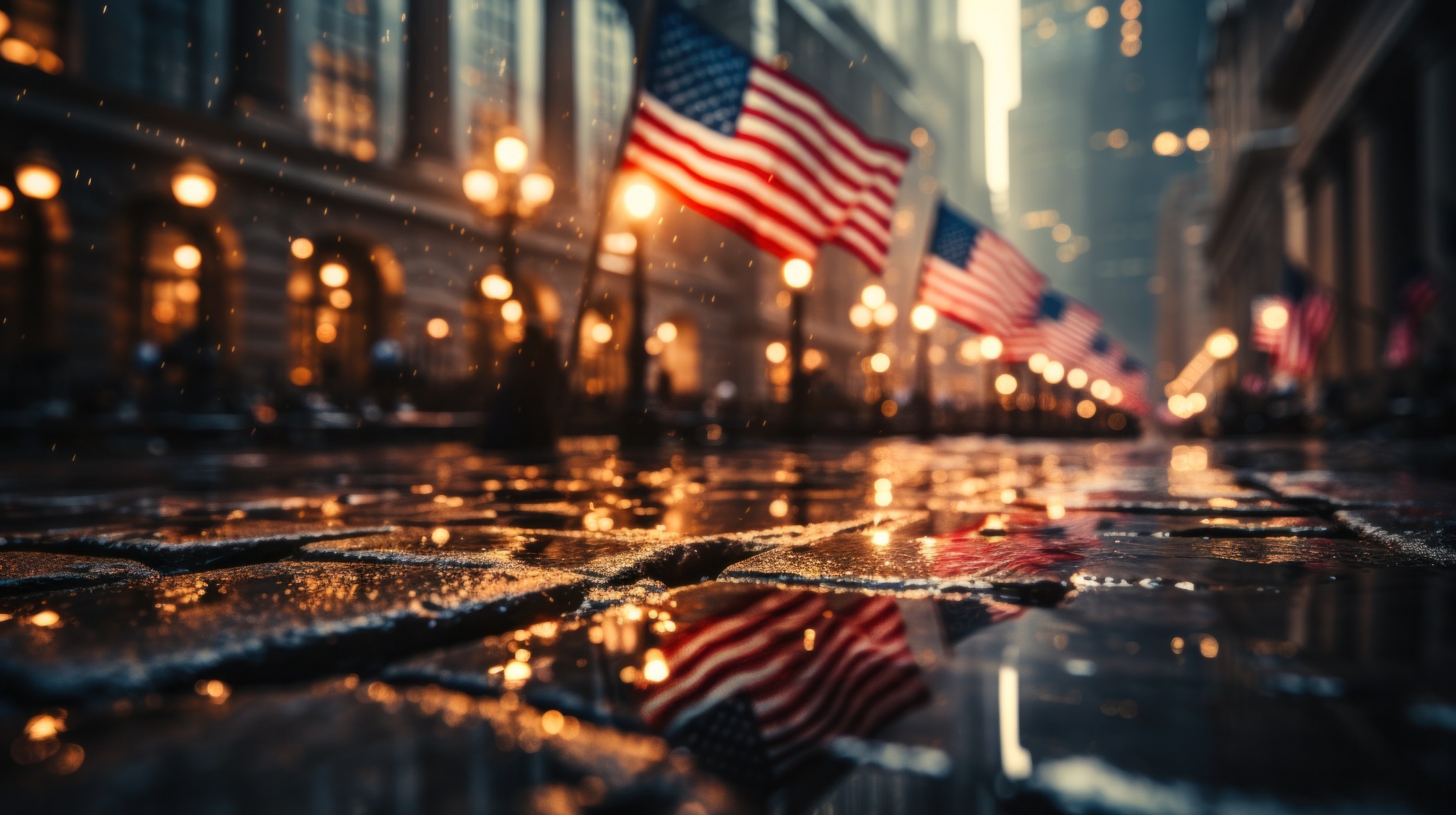Santa Fe, October 2020
The streets were empty; the town silent. Tourists and artisans nowhere to be found. Shops, restaurants, galleries, and churches were dark, empty, and locked up tight. Families were confined to their homes, ordered to social distance and avoid gatherings of all kinds. Businesses deemed “non-essential” forced to close by order of the governor. But while the city — and the world — was under lock down for a deadly plague, mob “justice” was given a pass.
On October 12th — Indigenous People’s Day — dozens of activists converged on Santa Fe’s historic Plaza armed with ropes, chains, and spray paint, and toppled the 150-year-old Soldiers’ Monument (aka: “the obelisk”) to the ground.
“LAND BACK” was spray-painted across the ruins in dripping, blood-red paint. Red handprints smeared the base. The obelisk was reduced to rubble.
No one stopped the protestors. No one cited them for breaking lockdown orders, or vandalism, or destruction of public property/a national historic monument. Police stood down; and City Hall looked the other way, as the mayor had already given the activists his blessing, branding the monument a “symbol of systemic racism.”
Except, according to recorded history, the obelisk wasn’t erected to honor racism — systemic or otherwise. It was erected to honor the soldiers — many of them Hispanic — who defeated the Confederate troops at Glorieta Pass. Yet, the recent onslaught of affronts to Santa Fe’s cultural heritage don’t seem to be based in recorded history, rather a revisionist variety that leans heavily on accusations of “colonialism,” “white supremacy,” and “racism.”
It’s almost understandable, given the complexity of Santa Fe’s culture, marked as it is by deep, deep roots and its own unique vibe, cuisine, and telltale Land-of-Manana lilt — part Native, part Hispano, and part Southwest Anglo, but with a slower gait sprinkled with a hint of guttural growl. The land and its sprawling skyscapes are legendary, drawing to it artists, mystics, writers, cowboys, and middle-aged women with a yen for New Age spirituality and chunky turquoise.
Santa Fe feels old because Santa Fe is old. Local families go back hundreds of years and umpteen generations, bearing the same surnames as the streets folks drive on, the malls they shop at, the libraries they borrow books from, and the statues that seem to be triggering a whole lot of hullaballoo amongst certain segments of the population.
“My family’s been here for over 500 years,” a man named Garcia said while waiting in line at the Pacheco Street post office. “We came over with Cortez.”
Pacheco Street was named after Jose de la Cruz Pacheco — a carnicero whose family settled in Santa Fe in 1692.
There are roots, and then there are ROOTS.
Santa Fe is the oldest capital city in the United States. Founded in 1610 by the Spanish, “The City Different” has been marked by a rich, layered, multicultural history, with Pueblo, Hispano, Mestizo, and Anglo folks all claiming roots there. After the 1680 Pueblo Revolt drove out the Spanish settlers, Don Diego de Vargas returned in 1692, negotiating a “bloodless” return that eventually gave rise to three centuries of generative coexistence. Whether the reconquest was really, truly peaceful is debatable and quite possibly revisionist, as so many Western versions of Indigenous history have been proven to be.
Regardless, out of this history grew something singular and unique: a genuinely interwoven blend of Hispano, Indigenous, and Anglo traditions expressed in shrines, plazas, processions, monuments, art, and cuisine. For over 300 years, these cultures have peacefully co-existed and co-created, making Santa Fe a thriving international destination.
Those centuries of harmonious cultural coexistence are now being upended by a small, vocal group of outsiders imposing their values and cultural preferences upon those who came before them — all under the banner of “decolonization.” A wave of progressive activism has crept its way into Santa Fe, targeting a smattering of traditions and symbols — nearly all of them Hispanic.
Among them is the Fiestas de Santa Fe, established in 1712 to commemorate the Spanish re-entry into Santa Fe after the Pueblo Revolt. Widely recognized as the oldest continually running annual festival in the country, its Entrada pageant — dramatizing de Vargas’ return — became a lightning rod for activist backlash. Historic monuments like the Soldiers’ Monument, the Don Diego de Vargas statue, and the Kit Carson obelisk were also put in the crosshairs. The monument controversy is itself controversial, as none of these statues were erected to glorify slavery, racism, or genocide, despite any and all activist/mayoral rhetoric to the contrary.
These cultural shifts accelerated when Alan Webber assumed office as mayor in 2018. An East Coast transplant, publisher, and entrepreneur, Webber positioned himself as a progressive reformer. Once in office, he pursued policies and cultural overhauls that many locals view as systematic efforts to erase Hispanic history and traditions.
The Entrada was canceled the same year Webber took office. The de Vargas statue was removed in 2020. The Kit Carson obelisk was defaced with graffiti and red hand prints in 2020, and toppled by protestors in 2023. And the Soldier’s Monument — once the center of the city’s historic plaza – was destroyed by out-of-town protestors in October of 2020. Webber framed these removals as moral progress, while many Hispanic residents interpreted them as cultural erasure.
“We’ve lived together for 400 years. It wasn’t perfect, but it worked, and it was ours,” said local pastor Sal. “Now, people from California come here knowing nothing about our history, and tell us our traditions have to go.”
Rather than follow due process or facilitate public dialogue, Webber pushed removals through protests, proclamations, and emergency orders — bypassing democratic procedure, the will of the people, and appeals from Fiesta elders and community leaders. Santa Fe natives —Indigenous, Hispano, and Anglo alike — watched as their history, rituals, and monuments were removed and, in the case of the Soldier’s Monument, destroyed.
Why would Santa Fe’s own mayor allow so many foundational pieces of its history and culture to be dismantled on his watch? Some observers point to the mayor’s ties with local 501(c)(3) organizations like Santa Fe Community Foundation (SFCF) and School for Advanced Research (SAR), which fund progressive initiatives and Indigenous advocacy groups. Webber is a fiscal sponsor for both organizations, raising questions about the influence of wealthy donors on city policies and cultural narratives.
The push to remove Hispanic monuments and traditions under the auspices of “decolonization” doesn’t appear to be coming from inside the established Santa Fe community itself, rather from outsider activists funded by outsider philanthropists, and armed with a handful of social justice scripts.
This racist monument against Indigenous people has got to go.
- Three Sisters Collective on the Soldiers’ Monument
Three Sisters Collective has led the city’s most relentless campaigns against symbols of Hispanic heritage. Founded in 2017 by three Indigenous women, the group works to “decolonize” and “rematriate” O’ga P’ogeh — the Tewa name for pre-1610 Santa Fe. Since its inception, the Collective has aggressively challenged Santa Fe’s historical legacy, staging art interventions, organizing protests, and campaigning for the removal of monuments, rituals and symbols tied to Hispanic and European settler histories.
“We seek to re-indigenize and re-matriate Santa Fe,” said co-founder Dr. Christina Castro, the group’s most visible member.
Castro, born and raised in Southern California, graduated from Arizona State University’s School of Social Transformation and Justice Studies in 2018 with a doctorate from their Pueblo PhD Program. Co-founder Autumn Billie also attended ASU’s School of Social Transformation and Justice Studies. The school has received millions of dollars in funding from George Soros’ Open Society Foundation, while the Pueblo Studies program that Castro attended is funded by the W.K. Kellogg Foundation and Santa Fe Community Foundation. These foundations and SFCF fiscally sponsor Three Sisters Collective, highlighting how philanthropic money fuels activism in Santa Fe.
Ironically, this push for “decolonization” is bankrolled by the same colonial wealth it claims to resist, with foundations funding outsiders to rewrite culture/history while the people who built said culture/history are sidelined.
“The future is indigenous,” Castro is quoted as saying, without a hint of irony, despite being born and raised in California, and railing loudly and often against “colonization,” while taking it upon herself to dictate which aspects of Santa Fe’s history/culture should be removed.
If colonization means outsiders imposing their culture upon and erasing the history of the people who live there, then what, exactly, is unfolding in Santa Fe today?
“To control a people, you must first control…how they regard their history and culture. And when your conqueror makes you ashamed of your culture and your history, he needs no prison walls and no chains to hold you.”
- John Henrik Clarke
Before Three Sisters Collective and their philanthropist sponsors arrived in Santa Fe, Indians, Hispanics, Anglos, and Mestizos lived together in harmony, without the division and vitriol some locals claim have come along with all this “charity.”
“The Indians were always part of the culture,” a 40-plus year Santa Fe resident named Sarah told me. “But they weren’t THE culture.”
No one group was elevated above any others. No singular culture claimed exclusive rights to the city’s identity. Until recently, that is.
“Hispanics aren’t the ones knocking Indians,” a man named Emilio told me, while collecting signatures to restore the Soldier’s Monument. “But we’ve been living together long enough to not put them on any pedestals, either.”
Alas, the real story is not who pulled down the statues, or who canceled the Entrada, or who’s slinging dehumanizing pejoratives like “racist” and “white supremacist,” while demanding “Land Back.” The real story is who’s paying for the campaigns that are attempting to reshape Santa Fe’s cultural landscape. Because, contrary to any and all media spin, what is happening in Santa Fe is not grassroots activism run on bake sales and car washes. Three Sisters Collective and their allies are bankrolled by a who’s who of corporate philanthropies and donor-advised funds who claim to have a vested interest in “social transformation.”
There’s no shortage of philanthropists using “donations” to steer policy, reshape culture, and push social justice agendas down Santa Fe’s proverbial throat. But when it comes to Indigenous activism — and the false dichotomy that frames honoring Native heritage as incompatible with preserving Hispanic culture — the W.K. Kellogg Foundation leads the charge.
It started in 2016, when Kellogg poured $2.5 million into its Reclaiming Native Truth project —a two-year research initiative that became the blueprint for a wave of nationwide “narrative change” campaigns aimed at amplifying Indigenous visibility. The project birthed social justice organizations like Illuminative, and laid the groundwork for the surge of Native activism now sweeping Santa Fe.
It’s difficult to pinpoint exact dollar amounts. In addition to Kellogg’s publicly listed grants, donor-advised funds like Tides Foundation, Amalgamated Foundation, Solidaire Network, and New Ventures Fund anonymously funnel hundreds of millions every year to progressive causes.
“Donor-advised funds…allow ultrawealthy interests to direct funding anonymously to their pet projects,” said Democrat Senator Sheldon Whitehouse. “They are essentially identity laundering operations.”
We do know that Kellogg gave $900,000 to SAR, $112,500 to Earth Care International (“to elevate the power and voices of Diné communities in New Mexico”), $2.8 million to Con Alma Health Foundation, and $3 million to SFCF, with which it maintains an ongoing funding partnership. Both SFCF and SAR support Three Sisters Collective, and both receive funding from Mayor Webber himself.
It’s worth remembering that Kellogg built its fortune on monocrop agriculture which has, historically, decimated Native food systems. Now, the foundation invests in “racial healing” and “systems transformation,” targeting the very communities their industrial practices previously harmed.
“Corporations do this all the time: they contribute some small (but very visible) amount of money toward the solution for a problem that they themselves have created in the hunt for outsize profits,” wrote Paul Constant in Business Insider. “The glow of philanthropic giving obscures the exponential wealth that the corporation draws from the situation they’re ostensibly trying to solve.”
The Ford Foundation is another powerhouse driving Santa Fe’s social justice machine—funding arts, climate justice, land management, and Indigenous activism. Critics argue its fixation on “land back” and environmental stewardship conveniently aligns with corporate efforts to control resource-rich lands. Ford didn’t respond to repeated requests for comment.
The money trail, however, speaks for itself. Ford funds Tides, Amalgamated, New Venture Fund, Seventh Generation Fund, and Solidaire Network — all of which bankroll Three Sisters Collective. When we recall Ford’s $40 million gift to Black Lives Matter in 2016, the statue-toppling tactics of Santa Fe’s activists start to look far less spontaneous than they do scripted.
Henry Ford built his empire on exploitation, anti-union tactics, and open antisemitism. Hitler kept his portrait in his office and awarded him the Reich’s highest civilian honor. Today, the Ford Foundation positions itself as a champion of “immigrant rights and racial justice.”
“They only care about Hispanics who are here illegally,” said born-‘n-bred Santa Fe entrepreneur Julia. “They don’t care about the Hispanics who are actually from here.”
The Rockefeller family followed a similar arc. They amassed their fortune through oil monopolies that extracted from Native lands, and now put their wealth behind “climate justice” and “Indigenous sovereignty.” At least three of their philanthropic arms fund Three Sisters Collective through SAR, SFCF, and Amalgamated Foundation.
George Soros’ Open Society Foundations (OSF) has poured millions into Santa Fe’s foundational infrastructure, as well as the local activism scene, underwriting narrative campaigns that recast Hispanic culture as racist and oppressive through donations to Illuminative, Solidaire Network, Return 2 Heart, and Tides Foundation.
“Open Society’s grantmaking is not an accident of misplaced charity,” wrote investigative researcher, Ryan Mauro, in a recent Capital Research Center report, “but a systemic pattern of empowering groups that glorify violence and destabilize societies.”
While OSF touts itself as a champion of Indigenous rights, Soros built his fortune through currency speculation and investments that destabilized Indigenous economies. His funds have held stakes in oil, gas, and mining — industries linked to land theft and displacement. The contradiction is glaring: financing Indigenous activism while profiting from the systems that undermine it.
As Dr. Castro said, “[Indigenous Futurisms] is the counter narrative to the dominant culture’s efforts to erase us from existence through ongoing genocide in the form of blood quantum, land theft and environmental contamination in the name of resource extraction…”
The Pritzker family’s Santa Fe philanthropy is spread out amongst a number of the funds, foundations, initiatives and grants. Their Libra Foundation underwrites a number of local organizations, including SAR, Solidaire, Return 2 Heart, Amalgamated, and Seventh Generation. Their family fortune was built upon large-scale land acquisition that displaced Native communities (Hyatt Hotels), as well as mining and other extractive industries (Marmon Group).
The pattern is unmistakable. Foundations whose wealth was built on exploitation now bankroll activist movements that claim to dismantle it.
Local intermediaries — SFCF and SAR — serve as conduits, fortified with multimillion-dollar grants from Kellogg, Ford, Rockefeller, Libra, and MacArthur. Once academic and artistic institutions, they now function as activist hubs pushing “racial healing” and “Indigenous sovereignty” programs.
MacArthur, McCune, and Pew foundations are also heavily invested in Santa Fe’s activism scene, alongside dark-money giants Tides, Arabella, New Venture Fund, Solidaire, and Amalgamated. These titanic fiscal sponsors anonymize money flows, obscure donor intent, and allow billionaires to steer policy and culture from behind the scenes, under the auspices of “charity.”
“Big philanthropy is often an exercise of power, the conversion of private assets into public influence,” wrote Rob Reich in Just Giving. “And it is a form of power that is largely unaccountable, often perpetual, and lavishly tax-advantaged. The affluent — and their foundations — reap vast benefits even as they influence policy without accountability.”
These are not small local donors supporting grassroots causes. These are multinational philanthropies whose fortunes were built on the very same extraction, exploitation, and colonization they claim to be undoing. Their grants are not random acts of generosity. They are strategic nudges shaping narratives and policy.
As John D. Rockefeller put it: “Philanthropy is not a gift. It’s an investment.”
The reach extends beyond activism. The New Mexico Local News Fund was established in 2018 under the fiscal/legal umbrella of SFCF, with funding from Pierre Omidyar’s Democracy Fund, along with New Venture Fund contributors George Soros, Sergey Brin, Mark Zuckerberg, Bill Gates, and Warren Buffett. The program funds local outlets like Santa Fe Reporter, Santa Fe New Mexican, 505omatic, and several local radio stations. Their editorial slant predictably mirrors their donors’ politics.
Other local outlets like Source New Mexico frame monument removals as “restorative justice,” while criticizing Hispanic resistance. The publication is funded by major corporate and philanthropic entities — among them Google, JP Morgan, Goldman Sachs, Morgan Stanley, Bank of America, and the Rockefeller family’s foundations — raising questions about the influence of its backers, as well as the neutrality of its reporting.
Arts institutions once devoted to creativity — SITE Santa Fe, Santa Fe Art Institute, and local universities — now function as ideological training grounds. Grants favor “decolonization” narratives and work that portrays Hispanic heritage as oppressive, while traditional arts are sidelined.
“All art is propaganda,” wrote George Orwell. “The question is, propaganda for what?”
And though these philanthropies claim to champion BIPOC equity, Santa Fe’s Hispanic population — the city’s historic backbone — receives only a fraction of the funding. SFCF hosts giving circles for Native, Black, and LGBTQ+ causes, but none for Hispanics.
The result is a hierarchy of identity that elevates some voices while silencing others. Hispanic families 400-year roots are demonized as “colonizers,” while West Coast newcomers are lauded as progressive truth-tellers.
The irony of the Santa Fe activism situation is that the removal of monuments and historical traditions are all taking place under the auspices of “equity,” “inclusion,” and “diversity.” And while the activists, philanthropists, and even the transplant mayor continue to pay lip service to these buzzwords, many Santa Fe locals see their actions as exclusionary, divisive, and deeply disrespectful.
“We don’t want to take anything away from the anyone,” Emilio told me of his efforts to have the Soldier’s Monument restored. “We just want our traditions to be respected, too.”
Respect, it seems, is not a two-way street.
“I get it. You feel like you’re losing your culture,” wrote Castro of Fiesta supporters. “That’s how indigenous people have been feeling since 1492.”
Inclusion doesn’t elevate one group to the detriment of another. Inclusion doesn’t tear down statues, ban three-hundred-year-old traditions, or tell one group they must sacrifice their history and their traditions to prop up another.
“The people with the most to lose from genuine social change have placed themselves in charge of social change,” writes Anand Giridharadas in Winners Take All: The Elite Charade of Changing the World, “often with the passive assent of those most in need of it.”
What is happening in Santa Fe isn’t restorative justice, and it isn’t decolonization. It’s divide-and-rule cultural assault engineered by billionaire social engineers claiming to be altruistic. Its corporate colonization dressed up as charity, attempting to rewrite the city’s history under the banner of equity.
“Who controls the past controls the future,” Orwell warned. “Who controls the present controls the past.”
Right now, billionaire philanthropies are controlling Santa Fe’s present — and with it, claiming the power to rewrite its past. The only question is: Will Santa Fe let them?







